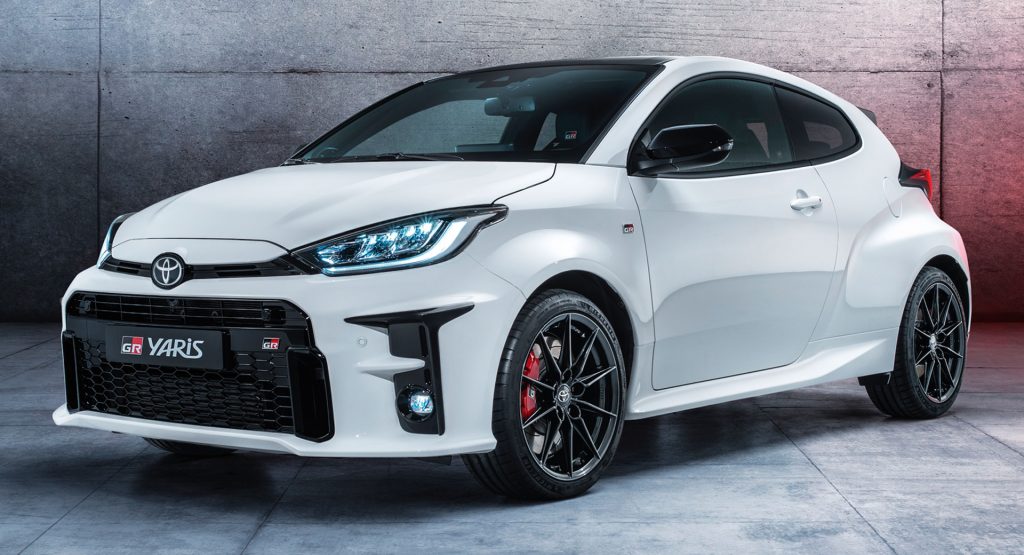European Toyota fans still recovering from the double-whammy of discovering that they won’t get the GR Corolla, and that the GR86 will be dropped there after only two years on sale, finally have something to be cheerful about. It looks like Toyota is working on a harder, lighter, faster GR Yaris.
Although the GR Corolla isn’t heading for Europe, its uprated three-cylinder engine reportedly is, and so is the spirit of the stripped-down, two-seat Morizo version of the Corolla we first saw earlier this year.
European-spec versions of the GR Yaris are powered by a G16E-GTS 1.6-liter turbocharged triple that develops 257-268 hp (261-272 PS) depending on the market, and 266-273 lb-ft (360-370 Nm) of torque. Now Autocar reports that Toyota will bring the 300 hp (304 PS), 295 lb-ft (400 Nm) version of the engine that made its debut in the Corolla Morizo and borrows Toyota CEO Akio Toyoda’s racing nickname, into the GR Yaris’ engine bay.
That should be enough to slice at least 0.5 seconds from the base car’s 5.5-second zero to 62 mph (100 km/h) time, and potentially more depending on how aggressive Toyota is with its weight-saving plans. Like the Corolla Morizo, the hottest Yaris will lose its rear seats but keep its stereo and basic air conditioning system, with the report quoting Gazoo Racing’s chief engineer, Naoyuki Sakamoto. Also migrating from the GR Corolla Morizo is the six-speed close-ratio manual transmission, but apparently, there’s no room for the cool triple-outlet exhaust.
Related: 2023 Toyota GR Corolla MORIZO Edition Goes Hardcore, Drops Rear Seats And Gains More Torque
However, launch- and drift modes that have become common on all-wheel-drive performance cars won’t feature on future GR models.
“We’re sticking to natural control of the vehicle,” Sakamoto said. “If the vehicle is good enough to control, we don’t have to prepare any special mode.”
Last week it emerged that Toyota was testing a series of GR86 coupes fitted with the GR Corolla’s G16E-GTS engine in place of the usual four-cylinder naturally-aspirated boxer engine. The cars were created to compete in Japan’s Super Taikyu race series, though Sakamoto didn’t rule out the possibility of production cars in the future.




